This article was co-authored by Jessie Antonellis-John. Jessie Antonellis-John is a Math and Science Instructor who teaches at Southwestern Oregon Community College. With over 10 years of experience, she specializes in curriculum development. Jessie earned her PhD in Teaching & Teacher Education from the University of Arizona, her Master of Education from Western Governors University, and her BS in Astrophysics from Mount Holyoke College. She’s also co-authored several peer-reviewed journal articles in professional publications.
This article has been viewed 42,589 times.
Whether you're baking a dessert or conducting a science experiment, measuring liquids accurately is important. Luckily, there's a way to do it quickly and easily. Choose the right kind of measuring device, keep it eye level when you measure, and record your measurements based on where the bottom of the meniscus falls.
Steps
Using Measuring Cups and Spoons
-
1Bend down to get eye level with standard measuring cups and pour. Get a standard liquid measuring cup that has a pouring spout and at least 1 to 2 inches (2.5 to 5.1 cm) of space above the red measuring lines. These features will make pouring easier and spilling less likely. When pouring liquid into the measuring cup, bend down and look at it straight on instead of down at an angle so that your measurement is accurate.[1]
-
2Look down into angled measuring cups as you pour. You can also purchase an angled measuring cup, which allows you to get an accurate measurement without bending down. Look down into the angled measuring cup as you pour in order to ensure that you measure the right amount.[2]Advertisement
-
3Bring measuring spoons up to eye level and pour. To measure small amounts of liquid, use standard measuring spoons. Hold the spoon level in the air straight across from your eyes. Carefully trickle the liquid into the measuring spoon until it reaches the rim.[3]
-
4Stop when the meniscus is at the bottom of the line. When you pour liquid into your measuring cup, the liquid will appear higher near the glass walls of the cup than towards the middle. The surface of the liquid is called the meniscus. Pour liquid in until the bottom of the meniscus is perfectly level with the graduation line.[4]
Using a Graduated Cylinder
-
1Steady the cylinder with one hand and pour with the other. Graduated cylinders are tall, thin glass tubes that are most commonly used to measure volume during science experiments. Hold the cylinder securely on a flat surface before using your other hand to pour so that you don't knock over the cylinder and spill the liquid.[5]
- You could also use beakers that are labeled with milliliters or ounces to get an accurate measurement.
-
2Bring the cylinder straight up to eye level. When measuring with a graduated cylinder, it's best to bring it up to eye level, rather than bending down, so that the risk of knocking the cylinder over is smaller. This is especially important if you're measuring chemicals.[6]
-
3Determine the measurement by seeing where the meniscus falls. To read the measurement, determine which horizontal line on the cylinder is closest to the meniscus, or lowest point in the surface of the water.[7]
- The surface of the liquid dips like this because the molecules in the water are more attracted to the glass than they are to each other.
Measuring Liquid Medications
-
1Read the medication's instructions and/or label carefully. Whether you're measuring out and administering over-the-counter liquid medication or prescription medication, it's important to first read any instruction that's provided. Prescription labels typically include direct instruction on how much to take and how often. Over-the-counter medication labels include a lot of important information, including what it's used for, how to use it, and what's in it.[8]
-
2Weigh the person taking the medication to get an accurate dosage. When measuring and administering over-the-counter medications, you can typically determine dosage by age or weight. Weight is much more accurate, so step on the scale to find out how much medication is needed.[9]
- Some medications determine dosage based on age or time alone. If this is the case, simply take the recommended amount for your particular age and/or don't take another dose until the instructions specify that it's safe to do so.
-
3Use the measuring device that comes with the medication. Many over-the-counter liquid medications come with a measuring device, which is nearly always better to use than other measuring tools. Don't measure your medication with household measuring devices, such as a standard liquid measuring cup, unless you've misplaced the device that came with the medication.[10]
- Measuring with a household device may work just fine, but the one that came with your medicine is the safest bet because it was made specifically for administering it.
- Some types of measuring devices that may come with your medication include measuring cups, dosing spoons, droppers, and syringes.[11]
-
4Pour the medication in at eye level. Similar to when you're measuring liquids for cooking or for science experiments, you'll need to be eye level in order to get an accurate measurement. If the medication comes with a measuring cup or any other measuring device with a flat bottom, set it on a flat surface and bend down when you pour the medication in. Otherwise, hold the device up at eye level when you pour.[12]
Expert Q&A
-
QuestionWhat is the most accurate way to measure liquid?
 Marrow Private ChefsMarrow Private Chefs are based in Santa Rosa Beach, Florida. It is a chefs’ collaborative comprised of an ever-growing number of chefs and culinary professionals. Though regionally influenced primarily by coastal, traditional southern, cajun, and creole styles and flavors, the chefs at Marrow have a solid background in all types of cuisine with over 75 years of combined cooking experience.
Marrow Private ChefsMarrow Private Chefs are based in Santa Rosa Beach, Florida. It is a chefs’ collaborative comprised of an ever-growing number of chefs and culinary professionals. Though regionally influenced primarily by coastal, traditional southern, cajun, and creole styles and flavors, the chefs at Marrow have a solid background in all types of cuisine with over 75 years of combined cooking experience.
Private Chefs If you don't want to use measuring cups, try repurposing some food packaging you have at home. Yogurt, sour cream, and salad dressings usually come in containers that are measured in fluid ounces, so you can wash one out and measure with that.
If you don't want to use measuring cups, try repurposing some food packaging you have at home. Yogurt, sour cream, and salad dressings usually come in containers that are measured in fluid ounces, so you can wash one out and measure with that.
Expert Interview
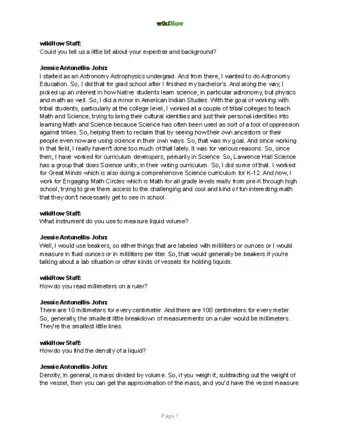
Thanks for reading our article! If you'd like to learn more about measuring liquid, check out our in-depth interview with Jessie Antonellis-John.
References
- ↑ http://startcooking.com/measuring-liquids
- ↑ http://startcooking.com/measuring-liquids
- ↑ http://www.cooksinfo.com/measuring-spoons
- ↑ http://www.seriouseats.com/2015/03/how-to-measure-wet-dry-ingredients-for-baking-accurately-best-method.html
- ↑ https://sciencing.com/measure-liquids-using-graduated-cylinder-7514485.html
- ↑ https://sciencing.com/measure-liquids-using-graduated-cylinder-7514485.html
- ↑ https://sciencing.com/measure-liquids-using-graduated-cylinder-7514485.html
- ↑ https://www.healthychildren.org/English/safety-prevention/at-home/medication-safety/Pages/Using-Liquid-Medicines.aspx
- ↑ https://www.consumermedsafety.org/over-the-counter-medicines/measuring-the-dose-of-liquid-medicines/measuring-the-dose-of-liquid-medicines
- ↑ https://www.consumermedsafety.org/over-the-counter-medicines/measuring-the-dose-of-liquid-medicines/measuring-the-dose-of-liquid-medicines
- ↑ https://www.healthychildren.org/English/safety-prevention/at-home/medication-safety/Pages/Using-Liquid-Medicines.aspx
- ↑ https://www.consumermedsafety.org/over-the-counter-medicines/measuring-the-dose-of-liquid-medicines/measuring-the-dose-of-liquid-medicines
About This Article
To measure liquid with a measuring cup, bend down so you are at eye level with the cup. Pour your liquid into the measuring cup, watching the level of the liquid the whole time. You can also purchase an angled measuring cup, which allows you to accurately measure liquids without having to bend down. If you’re pouring into a measuring spoon, hold the spoon at your eye level while you’re pouring. To measure liquid medications, use the measuring device that came with the medication, and hold it at your eye level as you measure out the medicine. Keep reading if you want to learn how to measure liquid in a graduated cylinder!
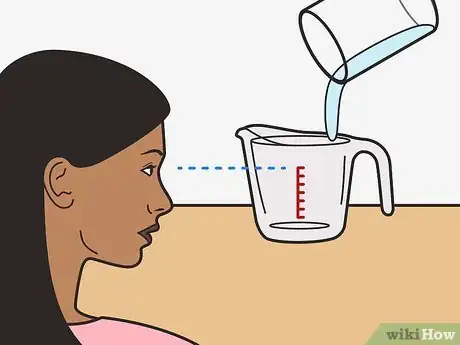
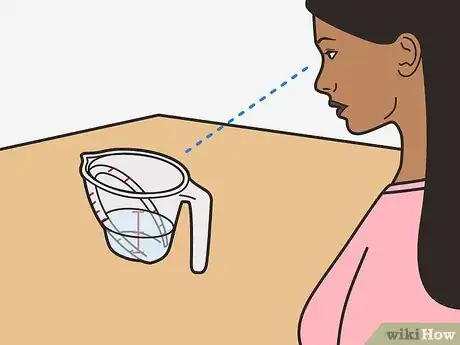
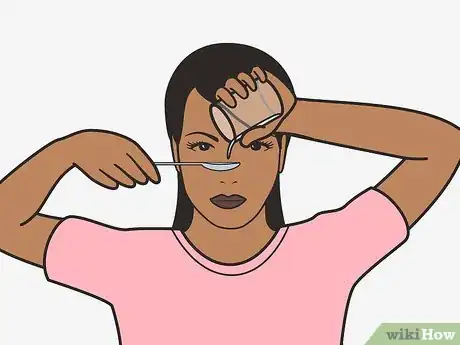
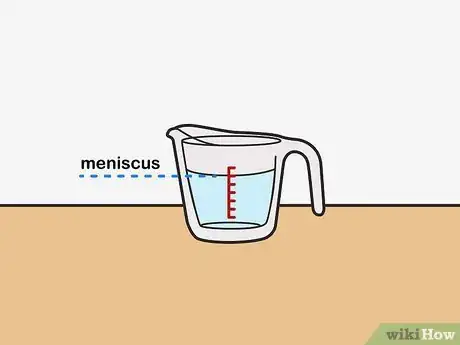
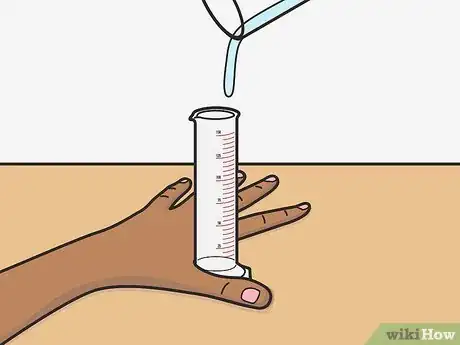



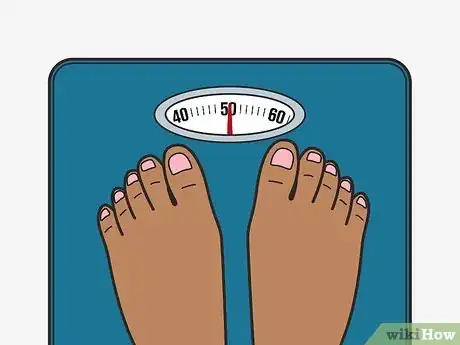

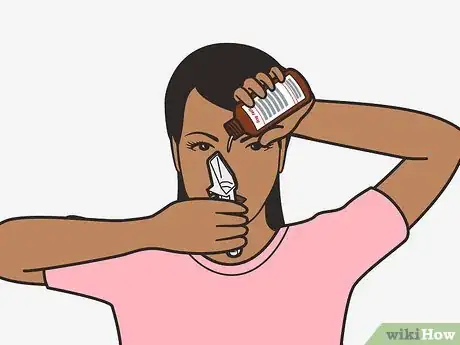
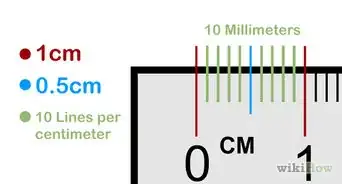
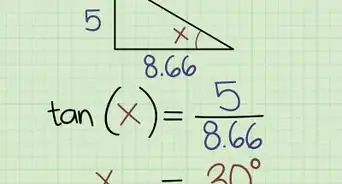
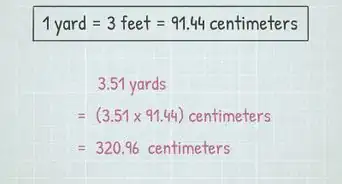
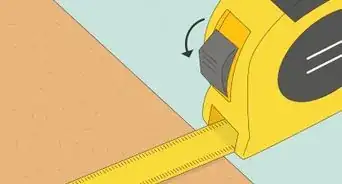
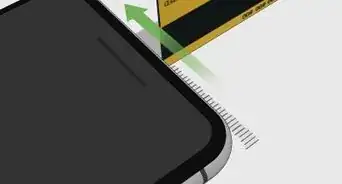
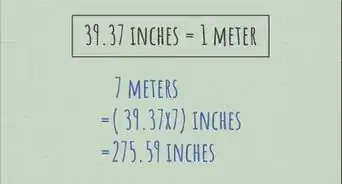

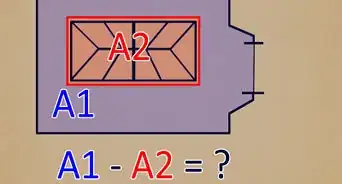
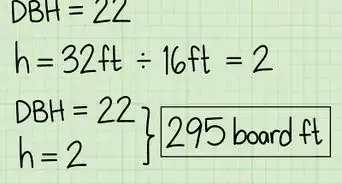

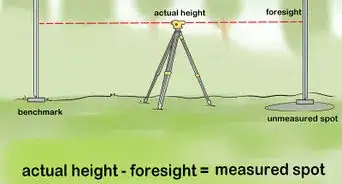
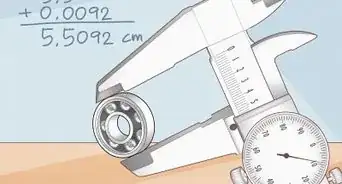
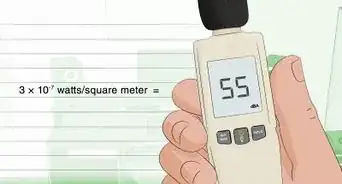







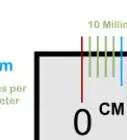
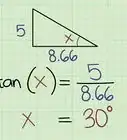
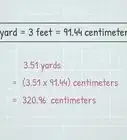
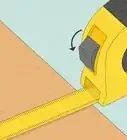



































Medical Disclaimer
The content of this article is not intended to be a substitute for professional medical advice, examination, diagnosis, or treatment. You should always contact your doctor or other qualified healthcare professional before starting, changing, or stopping any kind of health treatment.
Read More...